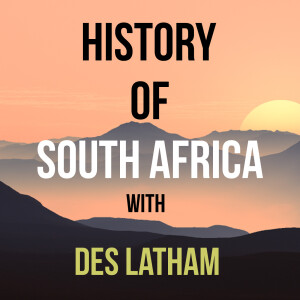
History of South Africa podcast
History

Episode 31 – Trade increases between Delagoa Bay and the Tswana and the Dutch Reformed Church makes its mark in the Cape
 2021-09-10
2021-09-10
Download
Right click and do "save link as"
This is episode 31 and we’ll now take a broader look at what was going on across southern Africa after a few episodes peering closely at the northern Cape. We’ll also take a closer look at how the Cape government was expanding.
Sleeping giants were to awaken by the last quarter of the 18th Century, with the emergence and expansion of a number of increasingly centralized chiefdoms in the region between the northern and central Drakensberg and the Indian Ocean. A similar process was taking place at pretty much the same time among the Tswana-speaking societies on the southeastern fringes of the Kalahari Desert.
There is not much documented evidence from this region which makes the telling of the story slightly more difficult. But as we’ve heard over the course of this series already, the wonders of archaeology have begun to paint a scientific picture – and historians have pieced together some of the emerging states of this time.
We also hear about the growing role of the Dutch Reformed Church. The experience of VOC political institutions particularly the local government, formed part of this heritage. But the strongest unifying institution both emotionally and intellectually, was provided by the Dutch Reformed Church.
The doctrine of this church was primitive Calvinism as embodied in the Heidelberg catechism and the decrees of the synod of Dort. Its emphasis was on the old testament and the doctrine was heavily weighted towards the concept of predestination. This particularly suited the colonial whites struggling to survive in a tough environment and accustomed from birth to treating nonwhites as slaves or serfs, and more often than not, enemies.
view more
Sleeping giants were to awaken by the last quarter of the 18th Century, with the emergence and expansion of a number of increasingly centralized chiefdoms in the region between the northern and central Drakensberg and the Indian Ocean. A similar process was taking place at pretty much the same time among the Tswana-speaking societies on the southeastern fringes of the Kalahari Desert.
There is not much documented evidence from this region which makes the telling of the story slightly more difficult. But as we’ve heard over the course of this series already, the wonders of archaeology have begun to paint a scientific picture – and historians have pieced together some of the emerging states of this time.
We also hear about the growing role of the Dutch Reformed Church. The experience of VOC political institutions particularly the local government, formed part of this heritage. But the strongest unifying institution both emotionally and intellectually, was provided by the Dutch Reformed Church.
The doctrine of this church was primitive Calvinism as embodied in the Heidelberg catechism and the decrees of the synod of Dort. Its emphasis was on the old testament and the doctrine was heavily weighted towards the concept of predestination. This particularly suited the colonial whites struggling to survive in a tough environment and accustomed from birth to treating nonwhites as slaves or serfs, and more often than not, enemies.
More Episodes
01235678910111213141516171819
Create your
podcast in
minutes
- Full-featured podcast site
- Unlimited storage and bandwidth
- Comprehensive podcast stats
- Distribute to Apple Podcasts, Spotify, and more
- Make money with your podcast
It is Free
- Privacy Policy
- Cookie Policy
- Terms of Use
- Consent Preferences
- Copyright © 2015-2024 Podbean.com





